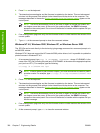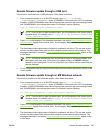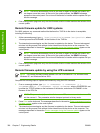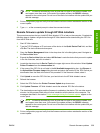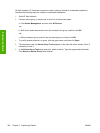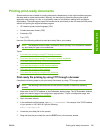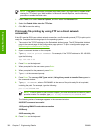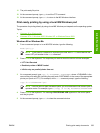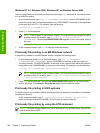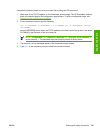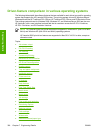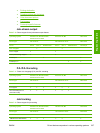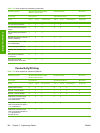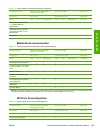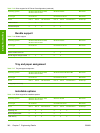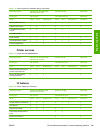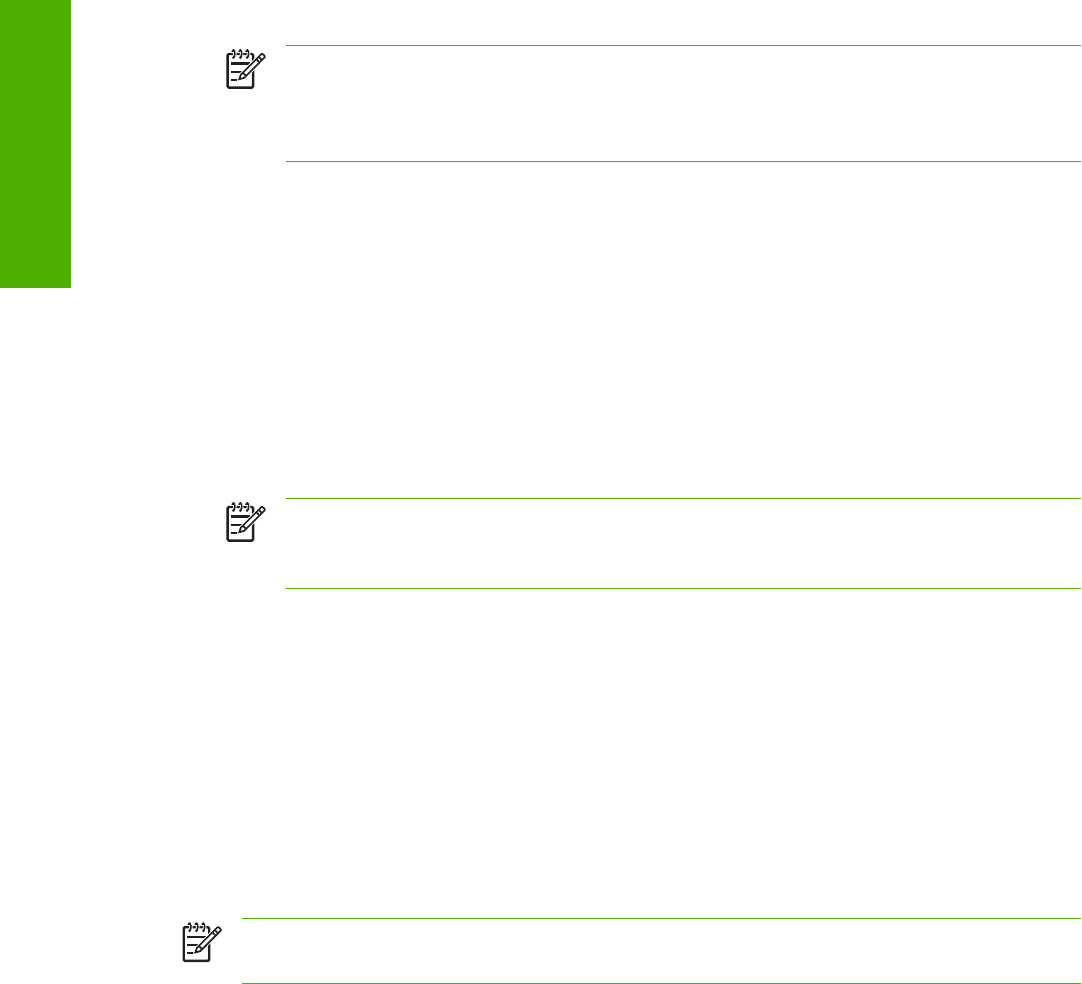
Windows NT 4.0, Windows 2000, Windows XP, or Windows Server 2003
The print-ready file can be sent directly to the product by typing a copy command at a command prompt
or in an MS-DOS window.
1. At a command prompt, type copy /b <FILENAME> <PORTNAME>, where <FILENAME> is the
name of the print-ready file (including the path) and <PORTNAME> is the name of the appropriate
printer port (such as LPT1). For example, type the following:
C:\>copy /b c:\5200FW.PDF lpt1
2. Press Enter on the keyboard.
NOTE If the file name or path includes a space, you must enclose the file name or path in
quotation marks. For example, type C:\>copy /b "c:\My Documents
\5200FW.PDF". The message PROCESSING JOB appears on the control panel, and the
job prints.
3. At the command prompt, type exit to close the command window.
Print-ready file printing in an MS Windows network
If the product is shared on an MS Windows network, complete the following steps.
1. From a command prompt or in an MS-DOS window, type copy /b <FILENAME> \
\<COMPUTERNAME>\<SHARENAME>, where <FILENAME> is the name of the print-ready file
(including the path), <COMPUTERNAME> is the name of the computer from which the product is
being shared, and <SHARENAME> is the product share name. For example, type the following:
C:\>copy /b c:\5200FW.PDF \\your_server\sharename
NOTE If the file name or path includes a space, you must enclose the file name or path in
quotation marks. For example, type C:\>copy /b "c:\My Documents\5200FW.PDF"
\\your_server\sharename
2. Press Enter on the keyboard. The message PROCESSING JOB appears on the control panel,
and the job prints. The message 1 file(s) copied appears on the computer screen.
Print-ready file printing in UNIX systems
For UNIX systems, any command method that delivers the print-ready file to the product is acceptable,
including the following:
At the command prompt, type cp </home/yourmachine/FILENAME/ dev/parallel>,
where </home/yourmachine/FILENAME> is the location of the print-ready file.
Print-ready file printing by using the LPR command
NOTE This direct printing method is for use in Windows NT 4.0, Windows 2000, Windows XP,
and Windows Server 2003.
334 Chapter 7 Engineering Details ENWW
Engineering Details



